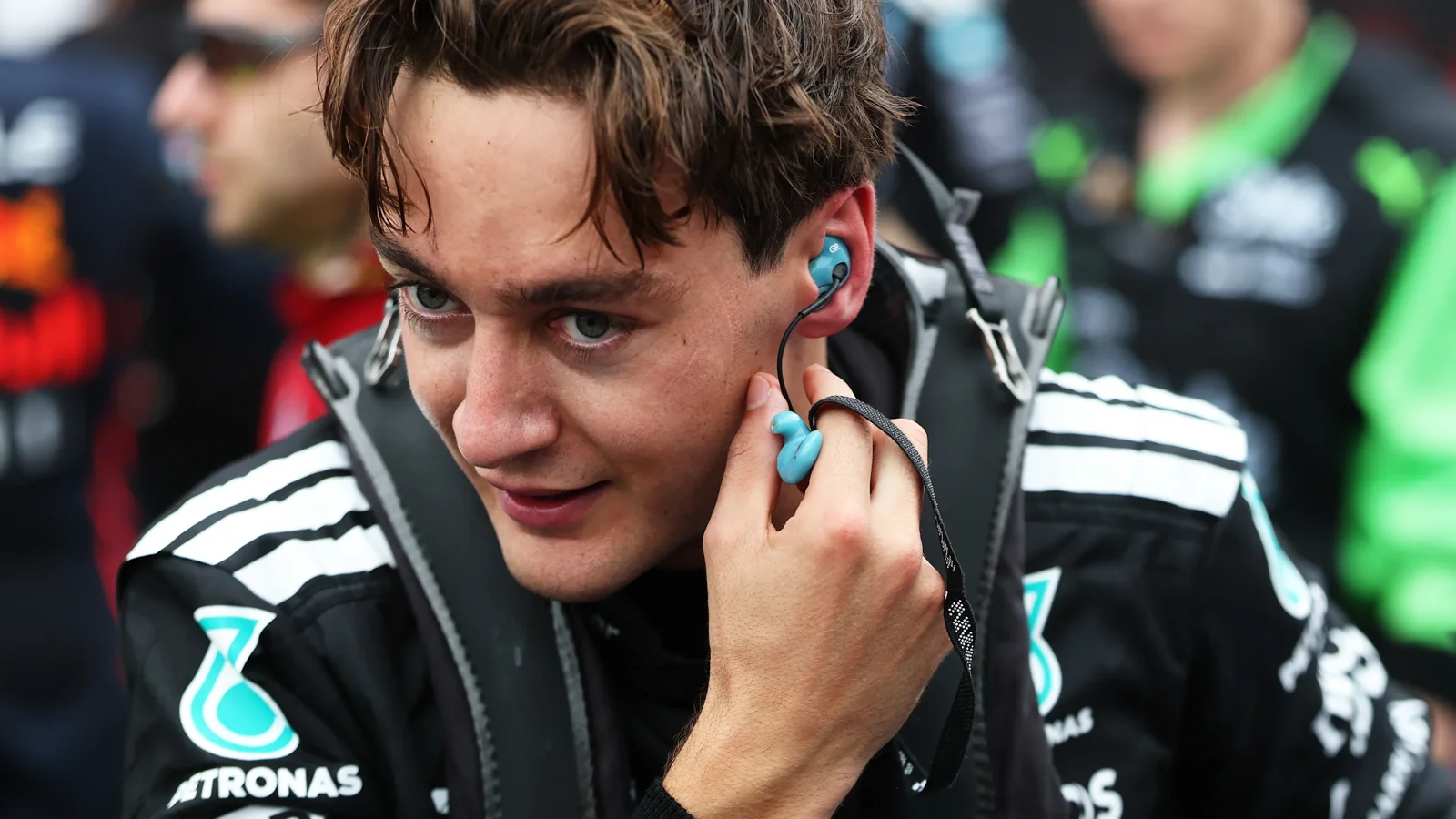Mercedes driver George Russell was unexpectedly called by the FIA to undergo a doping test following the Azerbaijan Grand Prix. Despite suffering from a respiratory infection earlier in the race weekend at Baku, the British racer secured second place, highlighting the importance of the George Russell doping test in confirming his compliance with anti-doping regulations.
Before the Azerbaijan GP, Russell had been noticeably absent from media appearances after his team disclosed that he was feeling unwell. Nevertheless, the 27-year-old managed to steer his Mercedes W16 to a strong P2 finish on Sunday. Later, Russell was seen being promptly escorted through the paddock by a Mercedes team member, still wearing his race suit.
This unusual sight was picked up by Sky F1’s reporter Ted Kravitz, who commented during his notebook show that the circumstances suggested Russell was called for an FIA-mandated doping test. Kravitz explained,
You would only go down here in your race suit if you’ve been called for a doping test.
He further added,
You wouldn’t be going straight back in your race suit to the hotel if you were staying in that hotel. So I assume he’s going for a… Yes he is. He’s going for a mandatory FIA doping test, which we will not follow him into because it means that he’s going to go for a little wee.
– Ted Kravitz, Sky F1 reporter

Understanding the FIA’s Mandatory Doping Tests for Drivers
The FIA holds the authority to request drug testing from any Formula 1 driver at any time to detect banned substances that could artificially enhance performance. Formula 1, along with all other FIA-regulated racing series, adheres strictly to the anti-doping guidelines set by the World Anti-Doping Agency (WADA). As a result, athletes competing globally in these events are frequently subjected to random testing protocols.
Any driver on the F1 grid may be tested without prior notice, a process that can be initiated by the FIA, WADA, or national doping organizations like the National Anti-Doping Organisation (NADO). For instance, Max Verstappen, the reigning Formula 1 world champion and one of Russell’s fiercest competitors, was recently surprised by a doping test request after achieving pole position at the Italian Grand Prix. That test, however, did not affect Verstappen’s results at Monza.
To date, no F1 driver has ever failed to meet the FIA’s anti-doping standards while competing, maintaining the sport’s commitment to fair competition despite the high-pressure environment.
Context and Consequences of the Post-Race Test at Baku
George Russell’s call for a doping control test at the Azerbaijan GP represents a routine but vital component of Formula 1’s regulatory framework, especially as the championship enters a tightly contested phase. During the race, Russell shared the podium with Williams’ Carlos Sainz and Max Verstappen, underscoring the competitive intensity among the sport’s leading drivers.
The testing protocol helps assure fans, teams, and officials that race outcomes remain free from performance-enhancing substances, which is crucial given the stakes involved in the title race. The FIA and related authorities continue to enforce these rules consistently, which fosters transparency and integrity in motorsport.
Moving forward, Russell and all drivers remain liable for similar doping tests at any event, reflecting the ongoing vigilance necessary to prevent violations. This recent action serves as a reminder that even top competitors like Russell and Verstappen are held to these stringent standards to keep Formula 1 fair and competitive.
